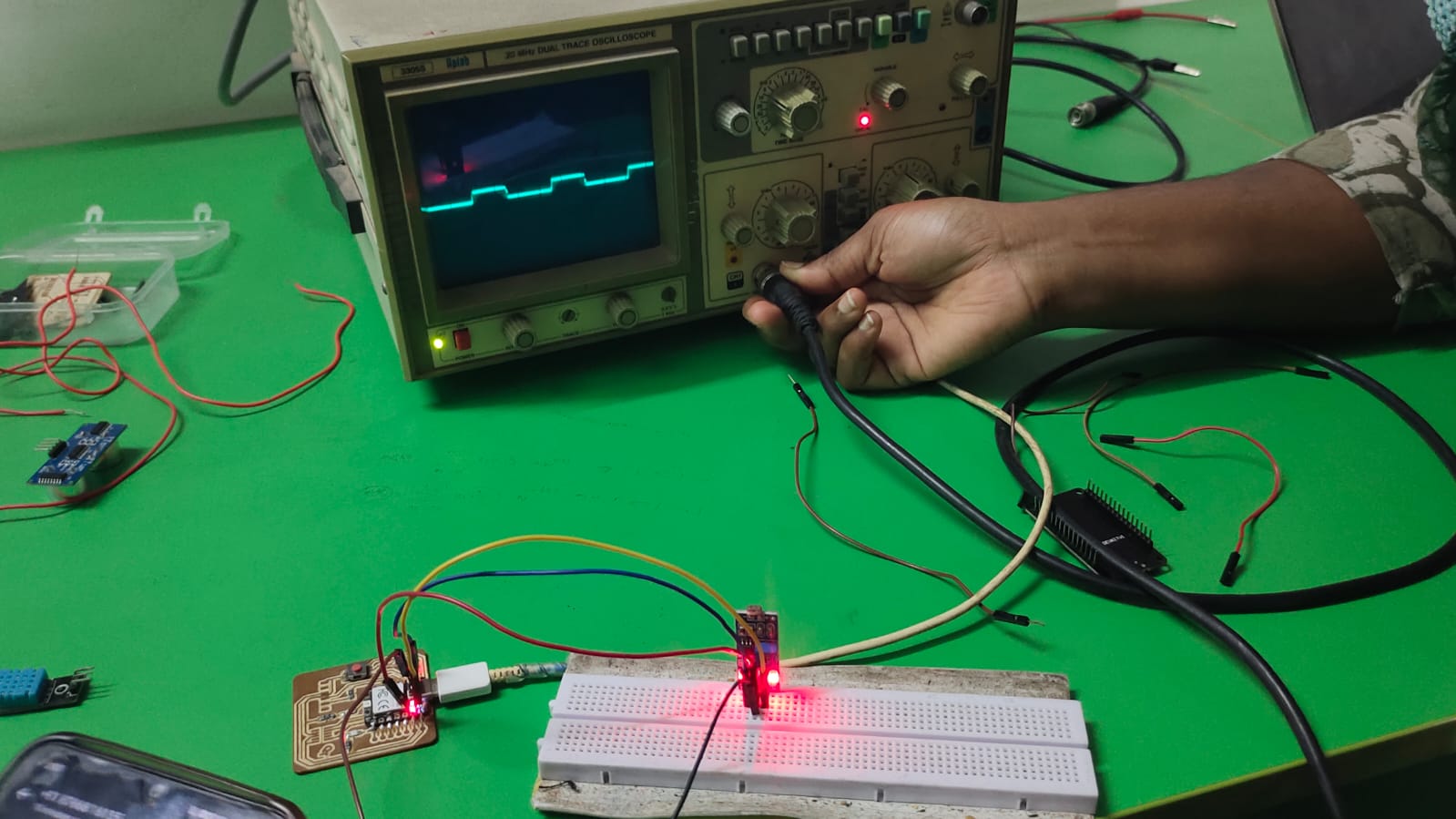
1. Group assignment:
probe an input device's analog levels and digital signals
What is Input device? The name itself give an idea that the device which takes an input from environment called as input device. An input device is a hardware component that allows users to provide data and control signals to a computer or other electronic systems. These devices translate physical actions, such as typing on a keyboard, clicking a mouse, or touching a screen, into electronic signals that the system can understand and process. Input devices are essential for user interaction, enabling the input of information, commands, and controls necessary for operating the system. Common examples include keyboards for text input, mice for navigation, touchscreens for direct interaction, and sensors for detecting environmental changes. By converting human actions into machine-readable signals, input devices play a critical role in the functionality and usability of electronic systems.

The chosen sensor is an LDR (Light Dependent Resistor) sensor, with its datasheet available here. An LDR sensor is an electronic component that changes its resistance based on the light intensity it receives. Commonly used in applications like streetlights and camera exposure control, LDR sensors offer a cost-effective solution for light detection in various electronic projects. This sensor measures ambient light levels by detecting resistance variations. When exposed to high light levels, its resistance decreases; conversely, in low light conditions, the resistance increases. This change in resistance is used to provide an electrical output that corresponds to the amount of light hitting the sensor.

For the observation of operation of this sensor, we probed LDR with an oscilliscope to showcase the change of output voltage depending on ambient light

We utilized an ultrasonic sensor for digital measurements. These sensors employ ultrasonic waves to accurately measure distances between objects, commonly applied in robotics, automation, and various sensing applications like obstacle detection and proximity sensing.
Using the oscilloscope, we observed how the voltage value changed with variations in measured distance.